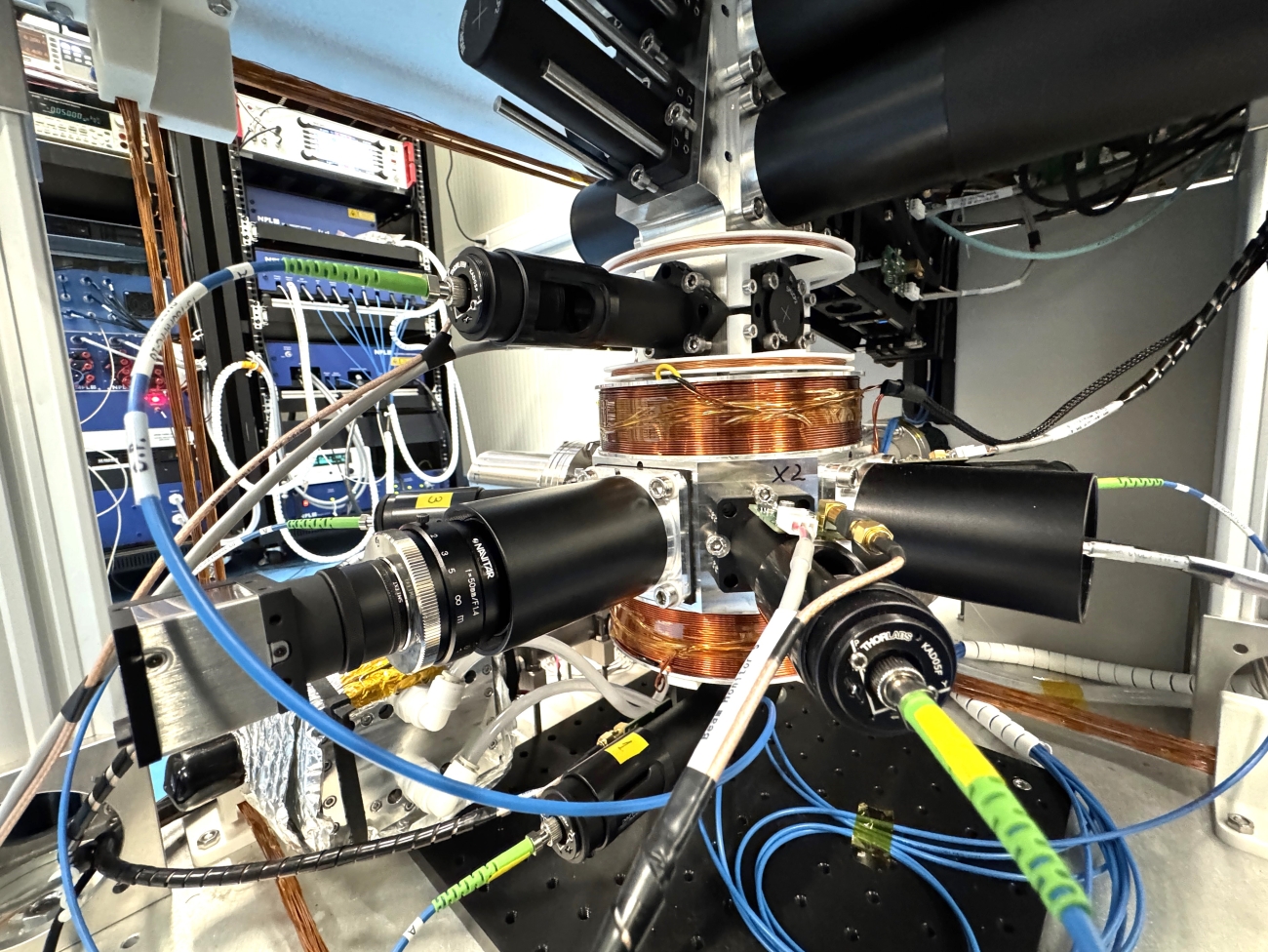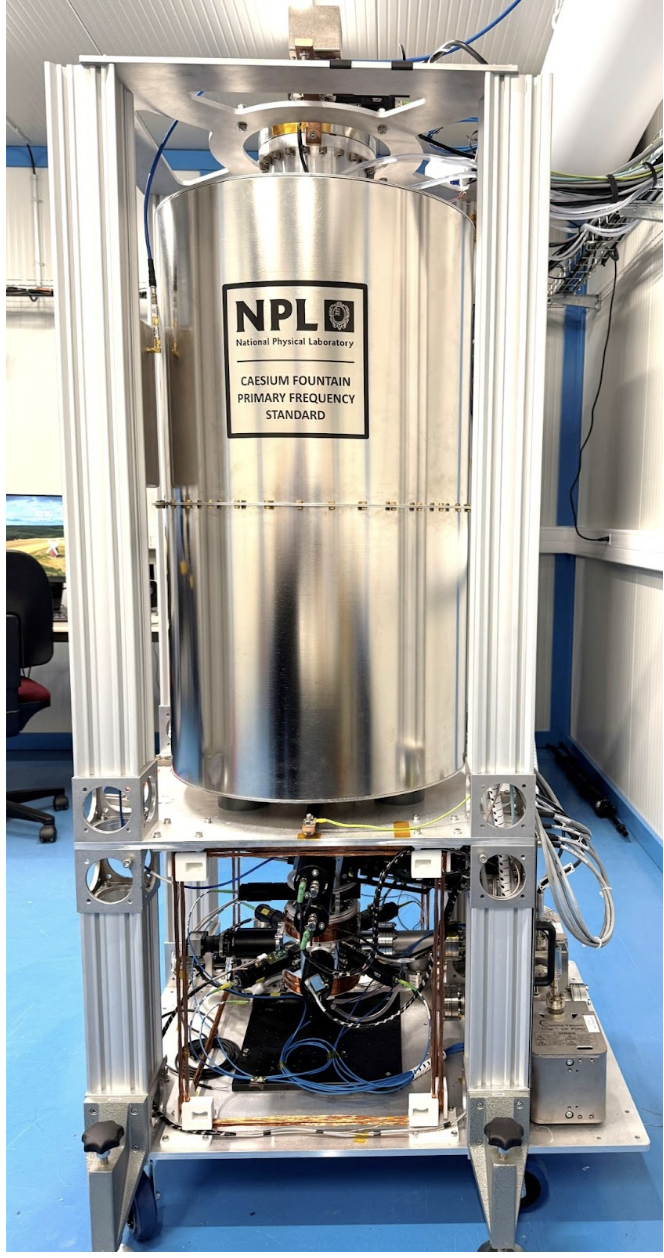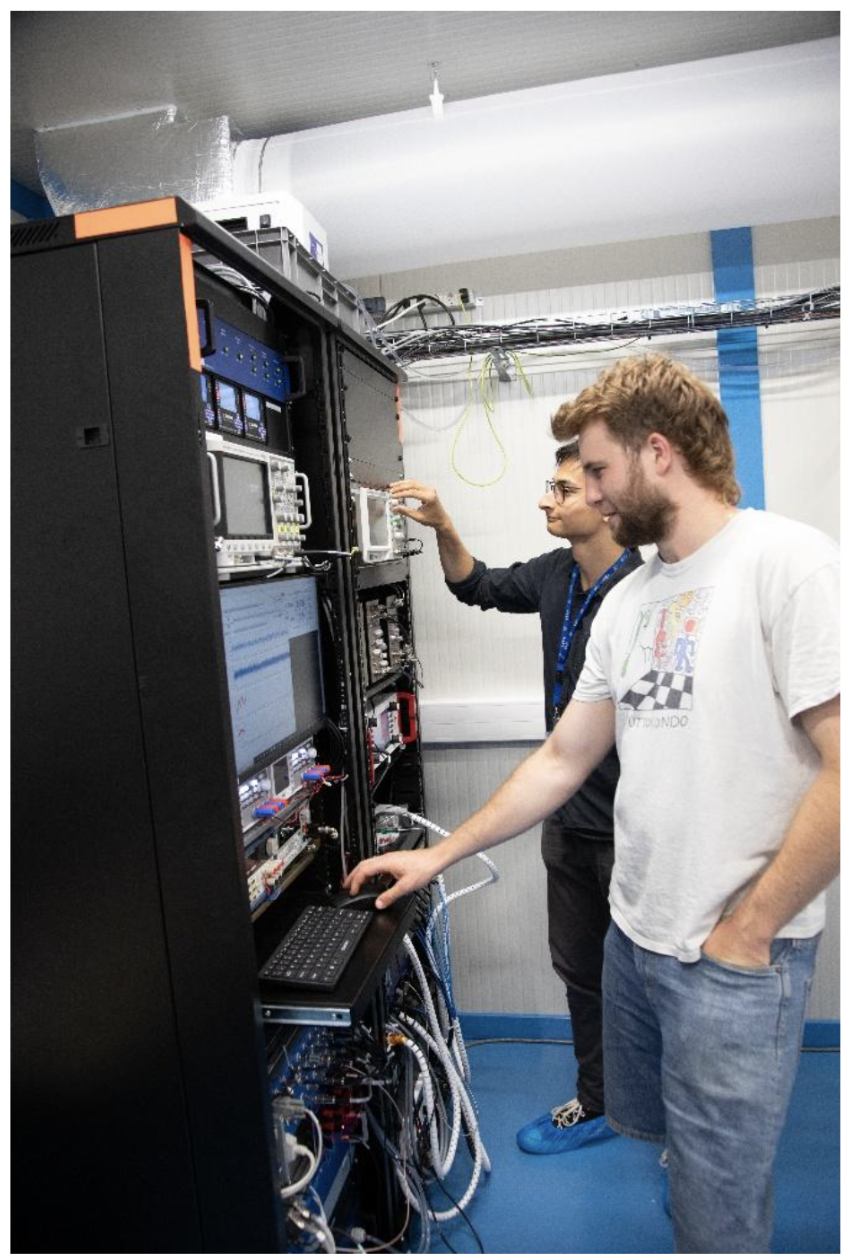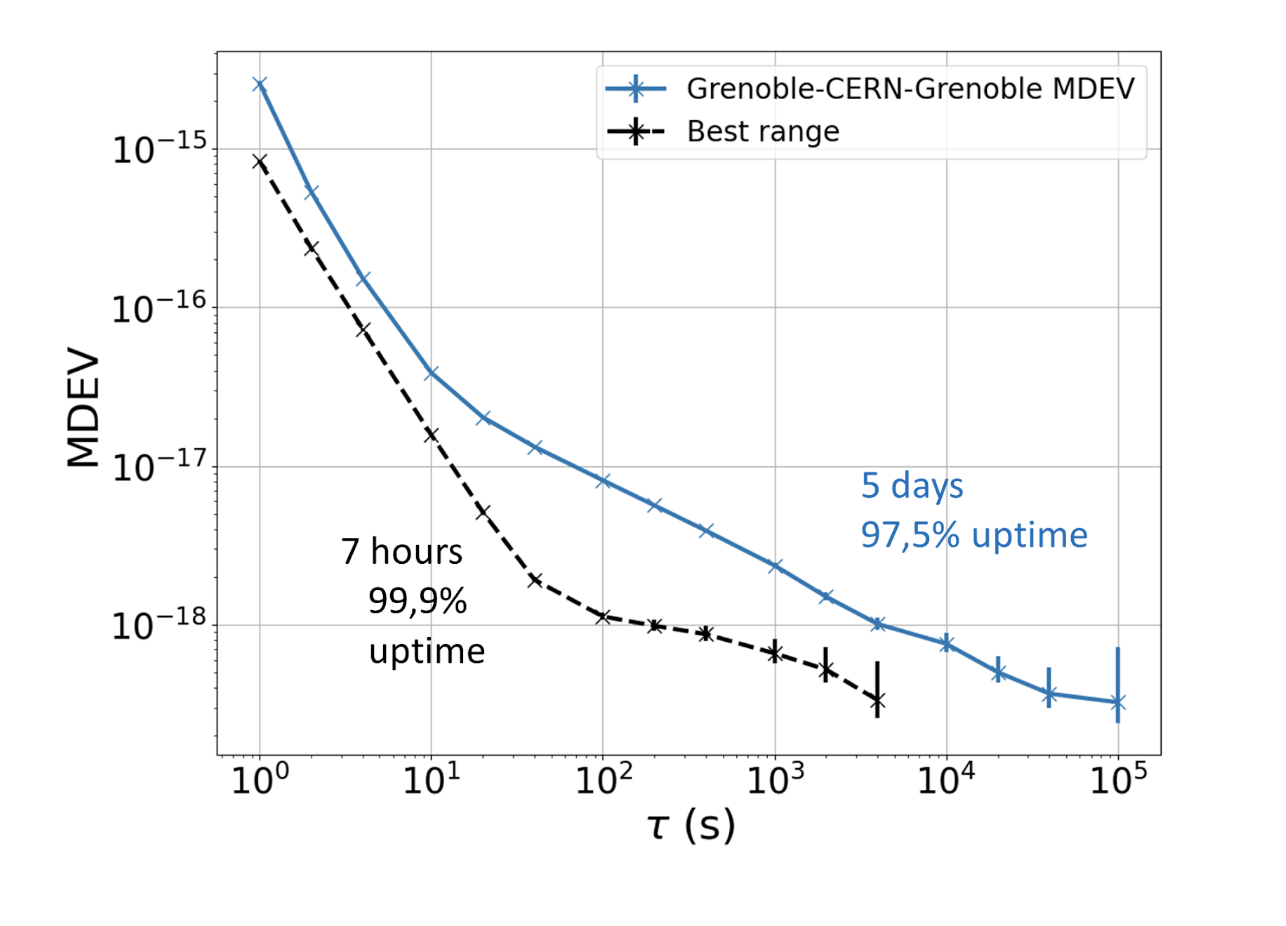Optical fibre link to assist in ultra-high precision spectroscopy of antihydrogen

Figure 1: Atoms in this part of the Cs fountain clock are trapped and laser cooled in preparation of their vertical launch.
Experiments at CERN’s Antimatter Factory test fundamental principles such as CPT invariance by studying the properties and behaviour of antimatter and comparing them with ordinary matter. Due to the central role of fundamental symmetry in relativistic quantum field theory, the discovery of even a small difference would suggest our understanding is incomplete and could point to new physics beyond the Standard Model. The ALPHA experiment performs tests of CPT invariance through spectroscopy of antihydrogen by measuring the frequencies of transitions in the anti-atom, both in the microwave and optical region. If the results match those of normal hydrogen, the measurement is consistent with CPT symmetry.
Within the antihydrogen optical spectrum, the 1S2S transition provides the narrowest line shape, due to the long lifetime of the upper state. It can therefore be measured with high accuracy, and in a previous measurement in antihydrogen a precision of two parts per trillion (2×10-12) was reached. The result was consistent with the corresponding hydrogen measurement, performed a few years earlier with a precision of four parts per quadrillion (4×10-15). In the antihydrogen measurement, the precision was partially limited by the frequency reference that was used, a quartz oscillator referenced via GPS, necessitating an ultra-precise clock to reach a similar precision as was achieved in ordinary hydrogen. Therefore, a caesium fountain clock has been recently installed in ALPHA. A new optical fibre link between CERN and the French national metrological institute Laboratoire Temps Espace (LTE) in Paris is now online to help frequency comparisons between matter and antimatter.

Figure 2: Overview of the ALPHA caesium fountain clock at CERN, which was designed and constructed at the National Physics Laboratory in Teddington, UK.
The SI second is defined as the duration of 9,192,631,770 oscillations between two hyperfine levels of the caesium-133 ground state. In 2022 a caesium fountain clock was implemented at ALPHA, providing an exact local realisation of the second. A cloud of laser-cooled Cs atoms is vertically launched and interrogated using the Ramsey interferometry technique, resulting in a frequency measurement of the clock transition with a precision better than 1x10-15 that is reached within one day. An active hydrogen maser in the same laboratory serves as a local oscillator that is steered based on the absolute frequency measurements from the Cs fountain clock.
An optical frequency comb, a femtosecond pulsed laser with a stabilized repetition rate and phase relation between each pulse, is used to bridge the gap between the RF signal from the maser and the optical domain. By stabilizing the comb using the maser signal and beating the comb laser with the laser used for spectroscopy of the antihydrogen sample, the absolute laser frequency is obtained. To ensure excellent short-term stability of the laser, it is locked to an ultra-low expansion (ULE) optical cavity. As a final step, the narrow-linewidth laser light, with a precisely known frequency, is delivered from the precision laboratory towards the antihydrogen trapping apparatus in the neighbouring building through an actively stabilized optical fibre link.

Figure 3: Researchers Joos Schoonwater and Edward Thorpe-Woods from ALPHA working on the Cs fountain clock.
While the caesium clock serves as the local frequency reference, the new optical link between CERN and Paris will be able to reduce noise in the frequency measurement process and provides a new route for frequency comparisons between ALPHA’s Cs fountain clock and the clocks at LTE. The link enables frequency comparisons with a much higher stability than comparisons via GPS satellite that have been used so far. Each section of the fibre link is actively stabilized, removing environmental noise to a level of 10-15 within one second, as is shown in Figure 4. By forming a beatnote between the light from the fibre link and the frequency comb at a wavelength of 1542 nm, the link helps to improve the frequency stability of the antihydrogen spectroscopy measurements. Finally, the link ensures that the Cs fountain clock remains accurate over time and paves the way for future measurements using optical quantum clocks, which surpass the stability of current SI second realisations.

Figure 4: Modified Allan deviation, illustrating the performance of the final part of the optical fibre link between Paris and CERN, as a function of the gate time τ.
The link is part of the REFIMEVE network that distributes an ultra-stable optical frequency reference to research laboratories across France and beyond using existing optical fiber infrastructure from the French internet network. This link serves as a pilot implementation of a broader initiative to connect multiple CERN experiments to REFIMEVE+, as a part of the CERN Quantum Technology Initiative. Beyond its potential to enhance clock precision across CERN, it also establishes a new pathway for the Laboratory to access Coordinated Universal Time (UTC), the global timekeeping standard.
ALPHA’s latest high-precision measurement of the transition between the ground state and the first excited state of antihydrogen has placed even tighter constraints on possible violations of CPT symmetry. With the new optical link, the collaboration aims to push these tests to unprecedented levels of precision.
